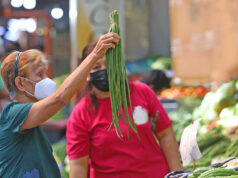RICE farmers’ incomes and yields are rising as a result of programs supported by the Rice Competitiveness Enhancement Fund (RCEF), according to a survey conducted by the Philippine Rice Research Institute (PhilRice).
PhilRice surveyed more than 4,000 RCEF beneficiaries across 55 provinces who harvested an average of 4.14 metric tons (MT) per hectare.
Respondents reported an additional yield of 440 kilograms per hectare were realized after farmers used certified inbred seed distributed by PhilRice under the RCEF program.
PhilRice’s Socio-Economics Division Chief Jesusa C. Beltran said the increase in output, assuming an average price of P17 per kilogram of dry palay, translates to nearly P7,500 per hectare in additional earnings.
Ms. Beltran said that due to higher income, farmers and their families have been able to weather the financial difficulties caused by the coronavirus disease 2019 (COVID-19) pandemic.
PhilRice said 97% of respondents reported receiving additional information about farming methods provided by PhilRice during the seed distribution activities.
Between March and July, PhilRice distributed more than two million bags of certified inbred seed to 750,000 farmers, who were tilling more than 855,000 hectares.
“With more farmers reached this wet season, a more positive outlook in rice production is expected this second semester under favorable weather conditions,” PhilRice RCEF Program Management Office Director Flordeliza H. Bordey said.
Citing data from the Philippine Statistics Authority, PhilRice said palay production during the first half rose 1.5% year on year to 8.39 million MT.
Agriculture Secretary William D. Dar said the findings are evidence that farming, with the right inputs and technology, can be profitable.
“We believe our joint efforts — in partnership with farmers, local government units and the private sector — are paying off, and thus we will vigorously implement the RCEF program in the succeeding years through 2025,” Mr. Dar said. — Revin Mikhael D. Ochave



